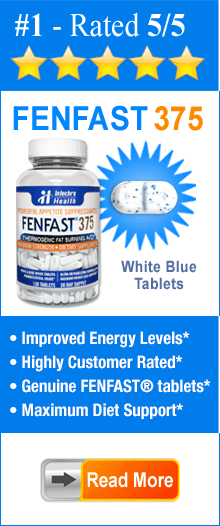The other day a visitor to our blog commented on my post “What to Eat Before and After Exercise” and after re-visiting this blog post I felt it would be helpful to discuss just the topic of eating after exercise. I have learned quite a bit more about this topic since writing that previous post back in February 2009. One of the most important aspects to post-exercise nutrition that I have learned is that protein is an important part of the equation.

Eating after exercise is an important for providing your body with the nutrients needed to repair muscle and restore glycogen.
When you’re working out you want to receive the best overall benefits for your body. Not only does this involve exercising your muscles, but it also includes helping them recover following exercise. When your muscles are given the proper nutrients they need to recover quickly you will build and tone muscle faster, which helps you to get the most out of your workouts.
People who are trying to lose weight may think that eating after working out is going against their efforts to shed pounds. However, this is not correct. When you exercise your muscles, particularly with endurance and weight lifting activities, you damage them. The only way to help them repair quickly and replenish glycogen stores (glycogen is stored in muscle and provides energy) is to eat after exercise, even if it’s a snack. The reason you want them to repair quickly and replenish glycogen is because you want to be able to exercise efficiently, not just one day a week, but every day. The most common side-effects when you don’t eat after exercise and don’t help your body repair are dehydration, fatigue and injury.
From the large amount of reading I have done, and the experimenting I have tried to figure out the proper way to eat after exercise, it is clear that there is no solid rule other than you should make sure you have a meal, even if it’s a snack, anywhere from 30 minutes to 2 hours following exercise. This meal should include the right carbohydrate to protein ratio as well as be healthy and nutritious.
Figuring out the right carb:protein ratio can be a bit tricky, and there is a variety of opinions by nutritional experts as what this ratio should be. Some scientific research suggests the ideal ratio for eating after exercise is around 2.5:1 of carbohydrates to protein. However, I have also read that this ratio can be 3:1 and even 4:1 carbohydrates to protein. I think that it is safe to say that if your carb:protein ratio is somewhere between 2.5:1 and 4:1 you will be in the optimal range for providing your muscles with the nutrients they need to recover.
At McMaster University in Canada, a muscle physiology researcher, Dr. Mark Tarnopolsky, has been studying nutrition relating to optimal performance including what to eat after exercise, and what all of those sport supplement makers promise. Primarily, it is important that you achieve the ideal protein and carbohydrate ratio so that you will be able to recover your body after your workout by providing it with exactly what it needs to regenerate after intense activity. What surprises many is that even though Dr. Tarnopolsky works out regularly, he does not rely on the use of energy bars, drinks, or shakes to obtain this coveted protein and carbohydrate ratio. What he does do to recover after exercise is drink a lot of water, eat real food, drink fruit juice, and eat fruit and he sees significant results as the outcome.
There are many workout supplements and products out there that are designed to help your muscles recover following exercise. The problem with many of these products, however, is that they are costly and not as nutritionally balanced as you may think. What Dr. Tarnopolsky and other sport nutritionists agree on is that as long as the proper carb:protein ratio is eaten within the right window of time after working out, you can just as easily and much more cheaply use real food, such as fruit and grains, in the same way as others utilize those “recovery” products produced in the bodybuilding industry. Furthermore, when whole foods are chosen there are a number of additional overall nutritional benefits as they contribute more effectively to a well balanced diet that is high in nutrients and fiber.
Here are some examples of healthy snacks to eat after exercise according to their carb:protein ratios:
| Post-Exercise Snacks | Carb:Protein Ratio | Calories |
| 4 pieces Melba Toast with 1/4 cup tuna salad and 1 plum | 2.5:1 | 204 |
| 1 medium apple and 1 1-ounce slice partly-skimmed mozzarella cheese | 2.6:1 | 157 |
| 1 cup cheerios with 1 cup skim milk | 2.9:1 | 190 |
| 1 cup apple juice, 1/2 cup grapes and 1/2 cup beef jerky | 3.1:1 | 356 |
| 1 cup plain, low-fat yogurt and 1 cup fruit salad | 3.2:1 | 280 |
| 1 cup chocolate soy milk and 1 kiwi fruit | 3.3:1 | 166 |
| 1 medium apple and 1 cup skim milk | 3.3:1 | 152 |
| 1 medium banana and 2 tablespoons peanut butter | 3.6:1 | 293 |
| 1 medium banana and 1/4 cup almonds | 3.9:1 | 309 |
| 1/2 plain bagel with 1 tablespoon lite cream cheese | 4:1 | 170 |
Eating after exercise is meant to help your body to recover from exercise and be ready to perform optimally the next day. After all, using your muscles to a certain degree does indeed damage them and providing them with the nutrients they need to repair is a natural process that helps them grow. Therefore, by eating the right foods, you can heal them more quickly so that you can get back to exercising with the energy you need to keep going, whether your goal is to lose weight or complete the Iron Man. Make sure to also drink plenty of water following exercise to rehydrate your body.
Other Related Posts and Articles You May Find Interesting: “Exercise Routine that Maximizes Weight Loss“, “Foods that Boost Metabolism“, “Fat Burning Exercising” and “Carb Protein Fat Ratio in a Healthy Weight Loss Diet“.





[…] to protein is a 4:1 ratio (four grams of carbohydrate to one gram of protein), which roughly would be equivalent to one banana with 1/4 cup raw almonds or one banana with two tablespoons of natural style peanut […]